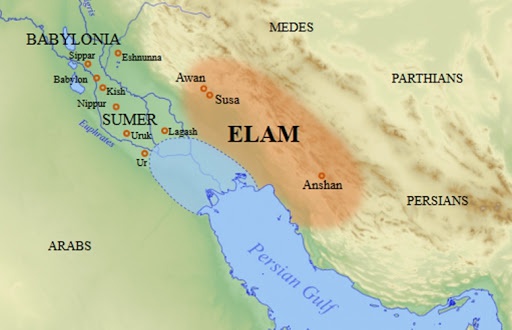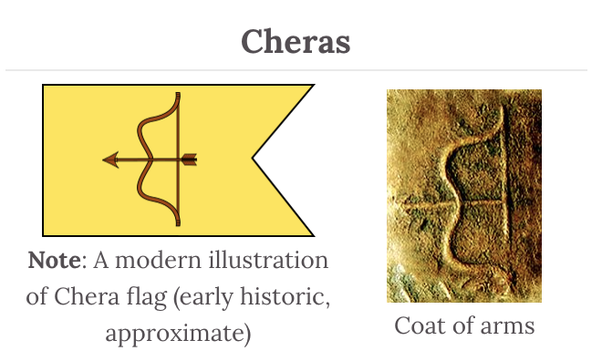Kumari kandam - Part 6 (Ancient Elam Civilization of Iran)
In continuation from the previous part of Kumari kandam, which explains about the tamizh civilization of Pandya kings in Indus Valley / Sindhu river, that is Pre - Indus valley civlization.
https://divinediyaas.blogspot.com/2020/12/kumari-kandam-part-5-pre-indus-valley.html
After the submergence of Kumari kandam under ocean, the people of lost Kumari kandam and ancient tamizhakam people had reached Persian gulf and started a new tamizh civilization over there. Tamizh civilization in Iran can be connected in several ways and there are many facts to prove the existence of tamizh civilization over there.
 |
Tamizh people had established their civilization in Persian countries in different stages and period of time starting from 10,000 BCE.
Zagros mountain - 10,000 BCE - one of the longest mountain range in Iran and is one of the earliest humans recorded in the Iran history. Historians and scholars considers that early humans in Iran were the dravidian farmers of ancient Tamizhakam.

But, how did the dravidians reach Zagros mountain ??
During the submergence of First tamizh sangam at Kumari kandam which was around 10,000 BCE, a branch of early Pandya kings migrated to Iran via Persian Gulf and established a new tamizh kingdom over there. For detail information about submergence of Kumari kandam, reach out to
https://divinediyaas.blogspot.com/2019/12/kumari-kandam-ancient-tamilakam-part-1.html
https://divinediyaas.blogspot.com/2019/12/kumari-kandam-ancient-tamilakam-part-2.html
Pandya kings were too powerful and strong that even the asuras have a fear to fight with them. During the time of Ramayana, the ferocious asura king Ravana was also reluctant to wage a war with Pandyas and so had a treaty with Pandya King of tamizhakam. Some set of Pandya kings and tamizh people had reached persia and started their civilization from Zagros mountains.
There are several signs of early agriculture in the foothills of Zagros mountain which are dated back to 9000 BCE. This mountain creates a geographic barrier between Mesopotamia region of Iraq and Iranian plateau and plays an important role in the history.
Also, this mountain is considered as home land for many ancient tribal groups, one such important ancient group of people were Elamites.
Who are Elamites ??
Elam Civilization - 4000 BCE
Elam civilization of Elamites was one of the ancient civilization of Iran which was dated back to 4000 BCE. Zagros mountain is the homeland for elamite people, who were one of the ancient tribal people of Iran. Proto elamite people grew up to the east of Tigris and Euphrates plains.
Chogha Bonut is an earliest village in Elam, dated back to 8000 BCE. Chogha Golan and Chogha Bonut were early agricultural communities which were flourished in and around Zagros mountain in the western side of Iran during 9000 BCE. The earliest known clay vessels, animal and human terracotta figurines were produced there.
How did they know agriculture during 9000 BCE ??
It was the dravidian farmers from ancient tamizhakam who were experts in agriculture and they did farming around Zagros mountain, they had also created clay vessels, utensils etc..
It appears that agriculture developed in the Near East and in the Indus Valley region around same time, suggesting that Elamo-Dravidian agriculturalists might have farmed from the Near East and they had also sent farming seeds from Zagros mountain to the Indus Valley. There was an extensive trade links between Elam and the Indus Valley Civilization. The early Harappan script has not been deciphered yet and early (Proto-) Elamite script is hardly understood so far.
Proto elamite region, which was ruled by early dravidian kings i.e Pandya kings from tamizhakam. There are several artefacts belonging to proto elamite period have been excavated such as kneeling bull, many bull engraved seals etc. It is one of the key point which is related to the Pandya kings of tamizhakam, Bull was Pandya King's royal emblem, in addition to the fish symbol.
Early Pandya kings from Kumari kandam were the first one to establish the tamizh civilization across Persian Countries. In ancient times, there were no Cholas, Cheras and Pallavas, Pandyas were the only kings who had ruled the entire Akand Bharat and the land till Greece in the West and Australia in the East.
 |
| Bulls on Persian columns in Persepolis |
What is mean by ELAM / ILAM ?
In tamizh, Elam - means home and also elam - means young. Scholars suggests that Elamite language believes to have connection with dravidian language of India. Apart from language, there is also a strong connection between people of Elam and dravidians of south India. There was a persistent trade connection between Indus valley civilization, Elam, Bactria of Central Asia and Mesopotamia region.
Indus valley people had traded things like sesame oil with Mesopotamian civilizations where it was known as ilu (Sumerian) or ellu (Akkadian), which is similar to el in Tamil (a Dravidian language). This proves that early dravidians, Indus valley people, Mesopotamia people, Sumerians and Akkadians did frequent tradings and spoke a same language that is ancient Tamizh / Tamili / Dramili...






So, Pandya kings were there during the period of Ramayana?
ReplyDeleteYes, Pandiya kings were there before the start of Satya yuga and in fact Pandya king Satyavrata (vaivasta manu)is the Manu of current manvantra. Ramayana happened during Treta yuga - 2nd yuga in the yuga cycle.
ReplyDelete